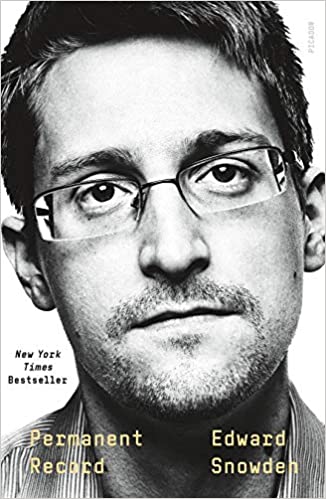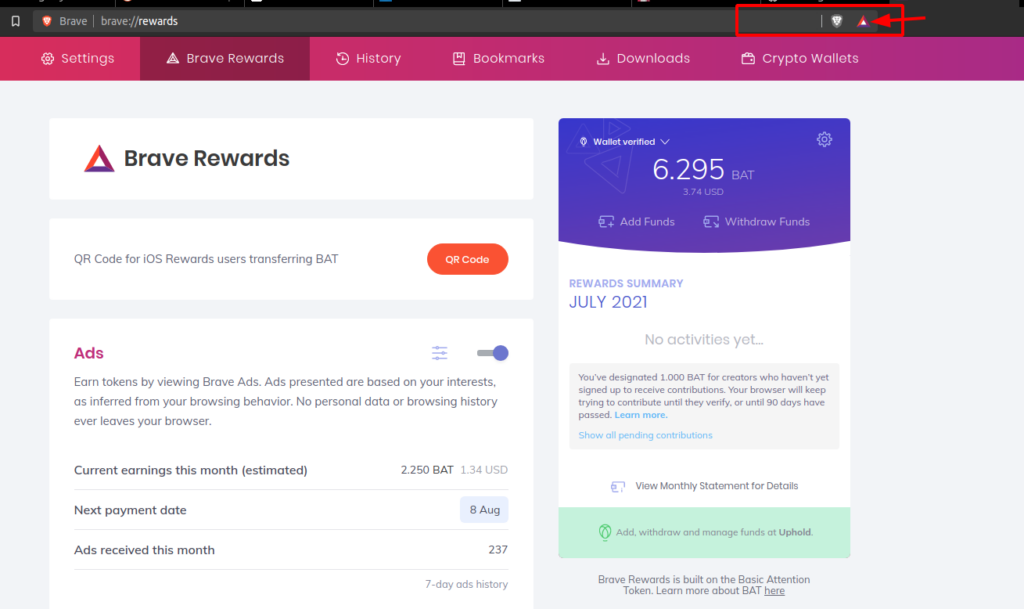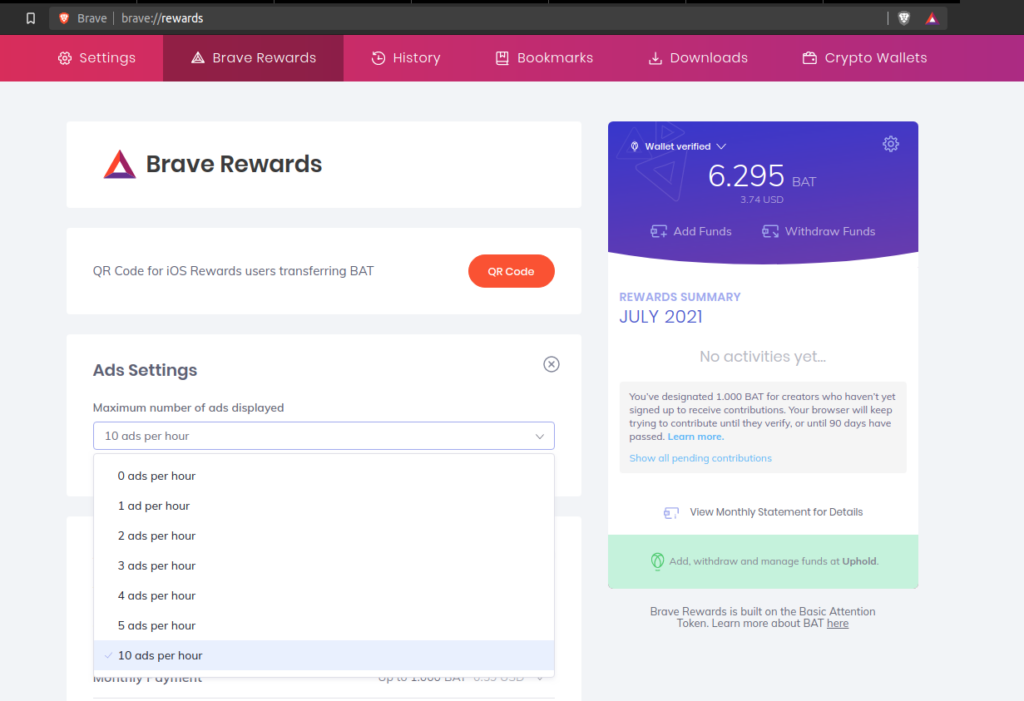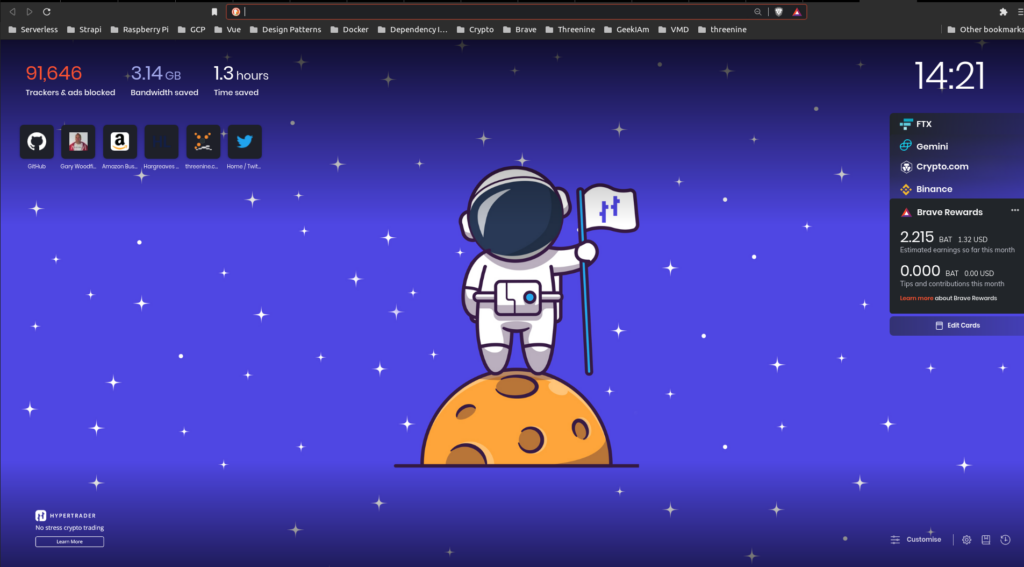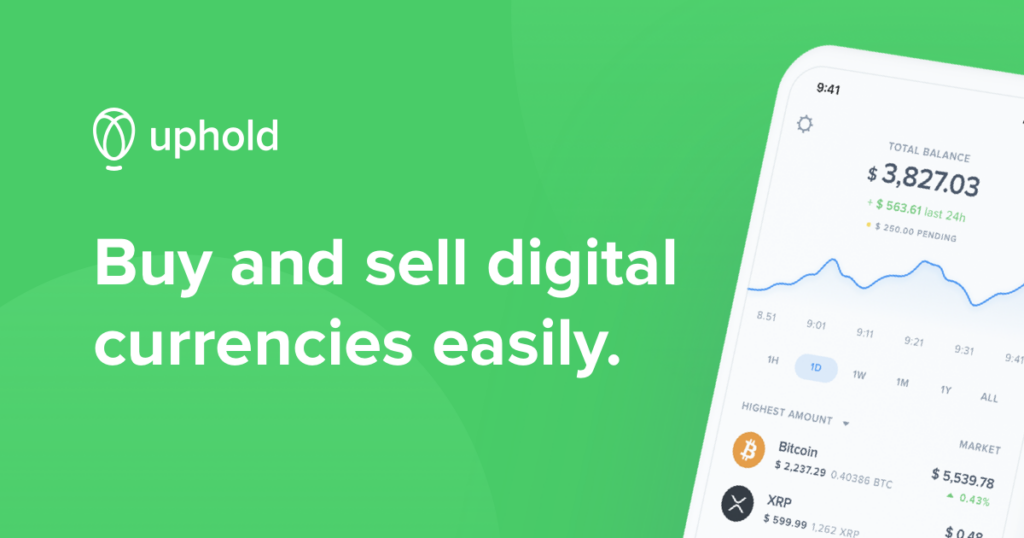This is the first post in a series on an introduction to crypto currencies, where I provide detail and the progression of my own personal journey into world of crypto.
My journey initially started about 5 years ago, when I got fed up with browsing the internet and being subjected to thousands of advertisements and having my movement tracked across all the websites I visit. Regular readers of my blog my have come across this in my How to Get back your online privacy , when made the decision to remove advertising from my blog.
Over the years of using the internet I have became more concerned about Internet privacy, which ironically as someone who actually posts publicly accessible blogs posts, one would think I wouldn't! However, I do feel there is a really big difference in choosing what you want to share and what others think is shareable information.
These concerns were further accentuated after I read Mindf*ck : Inside Cambridge Analytica’s Plot to Break the World , and literally discovered how your own personal data could actually be used against yourself and to alter your own behaviour by others.
Mindf*ck
Inside Cambridge Analytica's Plot to Break the World
whistleblower Christopher Wylie, the definitive story of the Brexit coup, the making of Bannon's America, and an ongoing crime against democracy
I also went on to read Edward Snowden : Permanent Record, and became acutely aware of just how much data is collected, analysed and stored about everyone on the internet. I also came to appreciate that much of this was being used for more nefarious use cases than was originally intended or even implied by the companies that are collecting it,
Permanent Record
Edward Snowden
Edward Snowden, the man who risked everything to expose the US governments system of mass surveillance, reveals for the first time the story of his life, including how he helped to build that system and what motivated him to try to bring it down.
Duck Duck Go
Way back in 2014, I had already made the switch to Duck Duck Go, as my primary Search Engine. Even though I was primarily using the Google Chrome Browser. I had started using browser plugins Ad block Plus and Ghostery in order to minimise the extent of the tracking.
In extreme cases I even started to make use of the Tor Browser and ProtonVPN for my personal browsing, not because I had anything at all too hide, but because at the same time I didn't feel I had anything I particularly wanted to share. I really didn't want adverts and annoying messages following me around the internet 1000's of marketing companies learning about my browsing habits and trying to conjure up a psychological profile of me.
DuckDuckGo does not collect any of your personal information and delivers more relevant results. It promises not to use cookies to follow users and says it doesn't collect any personal information on those who use it. Even your IP address is hidden.
While many websites and search engines collect data on you to sell to advertisers, DuckDuckGo takes a different approach keywords. Duck Duck Go, does have advertising, but the advertising is targeted exclusively using the keywords used to trigger the search, it doesn't need your personal data.
More importantly DuckDuckGo doesn't receive law enforcement requests because there is no data to request.
Brave
I stumbled across the Brave Browser, and was intrigued by the fact it was headed by Brendan Eich, the JavaScript creator and co-founder of Mozilla Foundation. Brave is free and open source, has extremely strict tracker blocking, phones home even less than Firefox, but still used Chrome's Blink browser engine, meaning it has top compatibility with nearly unmatched speed.
Brave is a web browser that aims to treat each user as an individual instead of a product , seeking to go well beyond Firefox in terms of security and privacy while retaining its speed and ease of use.
The browser was originally launched in 2016, It works really well and features are being added with every new update.
Brave is based on Chromium infrastructure, which means that there will be few surprises. A few more elaborate features may be lacking, but you'll notice that this has a speed benefit. Though Brave is based on Chromium, which sends data to Google, the developers have stripped it of that functionality
The browser has been made available across a range of platforms, including Windows, macOS, Linux, Android, and iOS. There are some differences between them, so it's worth having a look at each in turn.
Cookies can be blocked completely, the browser collects no personalized data, scripts can be blocked effectively, users can use a built-in password manager, and when you clear your browsing data, everything gets flushed not something that easy to say about products like Chrome.
The Brave browser promises 3 to 6 times faster browsing speeds by optimising its memory usage. It accomplishes this feat by blocking ads so your computer's resources can be entirely focused on the web site. This optimisation also improves battery life and your computer's ability to run the browser with other applications simultaneously.
Below is a snap shot of the stats off one of my machines, after a month or two of using the internet. When you see stats like that you realise just how much snooping actually goes on
Brave Rewards
It was while I was familiarising myself with the Brave Browser and all its features and functionality that I stumbled across Brave Rewards.
Brave Rewards is a program that pays users for browsing, whilst also putting in place a frame work to support content creators. Primarily because the Brave Browser blocks ads from other platforms, such Google etc, to compensate content creators in other ways is an important part of the program.
Brave Rewards pays you for your attention, giving large cuts of the advertising revenue to you, the viewer, as well as the website serving the ad. It even respects your privacy by ensuring your user data never leaves the browser.
How do Brave Rewards Work?
The first step to getting Brave Rewards to work is download & install the Brave Browser and then enrol into the Brave Rewards program and then you are ready to earn.
When starting the Brave Browser for the first time it will ask you if you would like to Start using Rewards
Once you enable this option you browser will now automatically start periodically serve you notification adverts and tally the time you spend on different sites. This information is not traceable to individuals and there is no risk at all of this private data being shared with anyone else.
The ads are served to you in of two ways. The first way would be via pop up notification messages, which will not interrupt your browsing experience and for the most you won't find them distracting.
When using Linux the pop will appear at the top op your screen and look something similar too
On windows they most likely appear in your notifications bar and will look similar the below
You also have the ability to control how many ads you receive per hour by managing the settings within your Brave browser by clicking on the Brave rewards Triangle in your address bar which will then display the Brave Rewards page
Then you can select the Ads Settings toggle
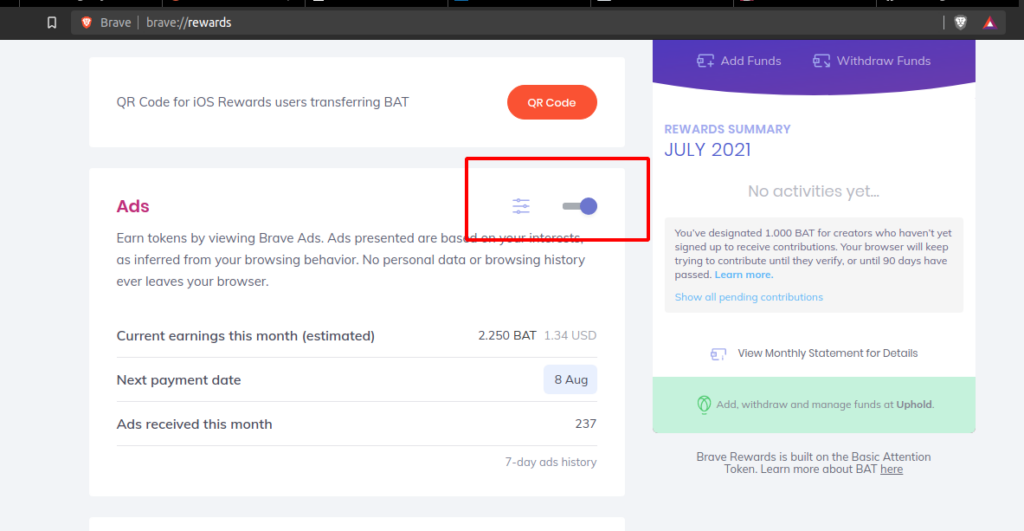
Which will then provide a drop down list box to select from how ads per hour you would like to recieve. Some days may want to receive more or less than others, its' entirely up to you. Personally I usually have this set to about 5 per hour.
The second way is on occasion when opening a new tab the background of the tab may include an advert similar as below
How Will I Get Paid for Brave Rewards?
This is the point where the gradual introduction to the world of Crypto Currencies began. Up until this point, I was aware of crypto and had obviously heard of Bitcoin etc, but I hadn't really ventured to far into the world. This for me was circa 2017/18 despite Crypto world initially kicking off in 2009!
Tne first thing to learn is that you will be paid in what are know BAT (Basic Attention Tokens) which is fundamentally a critical component of the Brave Browser ecosystem. Companies wishing to pay for advertising do so by buying BAT's, then these funds are distributed among content creators and Brave users. Users receive rewards denominated in BAT when viewing ads.
Content creators, such as myself, are also allowed to receive BAT as tips or donations from internet users. You can also access premium content from such websites by paying the subscription fees with BAT. As such, BAT functions as a reward and settlement mechanism on the Brave browser.
Basic Attention Token is based on the Ethereum blockchain network, and it is used as a utility token. So if you're anything like me, my mind was completely blown at this point and I didn't understand any of this!
It turns out The Basic Attention Token (BAT) was launched on 31 May 2017, and is simply a token using the ERC-20 standard that exists on the Ethereum blockchain. Since it is based on Ethereum, however, BAT benefits from the extensive infrastructure that has been developed for the Ethereum platform, including cryptocurrency wallets, decentralized exchanges and decentralized finance (DeFi) applications.
Yet again, there were a whole load of words that meant absolutely nothing to me, but obviously there must be some people on the planet that this meant a lot too.
It appears the entire supply of 1.5 Billion BAT Tokens were created at launch and no additional BAT tokens will be created. 1 billion tokens were distributed to investors in the Basic Attention Token ICO. 200 million tokens were allocated to the development pool, and 300 million tokens were allocated to the User Growth Pool (UGP), which is a pool of tokens used to provide an incentive for users to join the BAT ecosystem.
It turns out that in order to receive the funds I earned from ads I needed to open a Digital Wallet, and at the time I signed up to this in 2018 Brave Browser was recommending using Uphold a digital money platform.
Uphold is unique in translating all supported asset classes into a common digital language, which means that any asset can be exchanged directly into any other asset, creating an easy and intuitive trading experience. This 'Anything to Anything' architecture cuts out unnecessary fees and complexity compared with other platforms. Uphold is a bridge between the Old and New money systems.
Uphold operates on a 100% reserve model, backing all user funds one-for-one in underlying holdings, unlike traditional banks, which operate a fractional reserve.
Open an Account with Uphold
In order to start receiving payments for my ads I decided to open an account with Uphold, primarily because for intents and purposes it was the easiest thing for me to understand at the time.
The process of setting up an account with Uphold is really easy and they will guide you through the process and I found the customer service and experience to be brilliant.
Once your account, has been set you will be provided with what is defined in crypto parlance as Digital Wallet which is essentially the same as a traditional wallet, in that you store your cash in it.
Verify your wallet with brave rewards
Once you have your Uphold account up and running and a digital wallet you then just need to verify your wallet with your Brave Rewards account. To do this just simply click on the Brave Rewards triangle then the Verify Wallet.
Verifying your Wallet is entirely optional, however in my opinion it is worth doing, because verifying with a custodial wallet enables you to freely withdraw and deposit funds and you will receive your Brave Rewards directly into your wallet.
Verifying your Brave browser wallet allows you to control and transfer BAT funds out of the browser and into your Uphold account. From Uphold, you can then exchange BAT for other Cryptocurrencies or convert your BAT into FIAT to be deposited into your bank account.
Conclusion
This was the very start of my slow by gradual slide down the Crypto Currency Rabbit hole. The first ever Crypto Currency I bought and used and still use today is BAT. I frequently use BAT to tip and reward other content creators I find useful.
I still have ads activated on my browser which has turned out to be nice small form of passive income, for being rewarded to view ads and they have also proved to very educational and helped me to learn more about the various services, features and businesses involved in the crypto space.
- What is this Directory.Packages.props file all about? - January 25, 2024
- How to add Tailwind CSS to Blazor website - November 20, 2023
- How to deploy a Blazor site to Netlify - November 17, 2023

